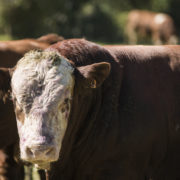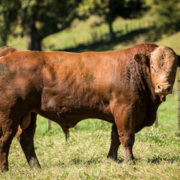You’ve Purchased Your Bull – What’s Next?
Once the hammer has fallen at auction the bull is now yours, but this isn’t where the work ends. The stressors that you place him under, the level of nutrition that he receives, as well as several other factors will have a huge bearing on the eventual fertility of this animal and whether he will be a long-lasting member of your team or not.
INSURANCE
Like with any other valuable asset you buy, insurance is paramount. The options here are aplenty so its best you do your own homework. Bull Sale insurance typically covers the bull you purchase at a sale or private auction from the fall of the hammer, to its final destination. Insurance beyond this will cover things like infertility, injury, death or theft, and other vet costs. A 12-month policy is normally the best value for money and gives you coverage right up to the following year’s sales. Injuries often occur when bulls are removed post-mating.
TRANSPORT
It’s important to work closely with your trucking operator and provide clear instructions on what you expect of them.
- Make sure they know which bulls can be mixed together.
- Discuss and agree on resting procedures for long trips, expected delivery time, and truck condition.
- Reiterate the importance of quiet handling of the bull throughout the transport process.
- Make sure you leave your phone number and email address on the instruction slip along with the delivery address (rapid number and road name), the tag number, and the brand of your new bull(s) – it is not uncommon for bulls to be delivered to the wrong address.
ARRIVAL
If you have purchased only one bull, unload them at the yards into a group of quiet stock – for example, steers or herd cows. If you have bought multiple bulls from a number of different management groups or studs it is often better to put them all together at once. Introducing new bulls into a mob one at a time can lead to the new bull being given a very hard time by his contemporaries. If they are fighting you might need to separate them, depending on how serious it is. Two bulls fighting is often less of a concern than three bulls fighting where it is more likely that serious injury can result. Never put young 2yo bulls indirectly with older dominant bulls.
Whilst the bulls are still new in their environment, take time to “train” them. Make sure they are familiar with the yards and how they work. Let them get used to you and how you handle stock – because this will be different from where they have come from.
NUTRITION AND HEALTH
When a bull is relocated to a new environment, they are often subjected to new viral, bacterial, and parasite challenges. This is unavoidable.
The key way to maintaining a healthy immune system is to ensure these animals have high-quality nutrition (which can be a challenge at this time of the year), have had the appropriate animal health treatments (quarantine drench, lice treatment, BVD vaccination, etc), and ensure that they establish new social groups quickly. Not adhering to these principles could have long-lasting negative effects on fertility.
A bull’s first mating season will be his most challenging make sure at the very least he gets a drench and a 30g copper cap post-mating. Adequate nutrition at this time is also vital, he needs to be in good condition leading into the next winter. If the feed is short, good-quality hay should be used as a buffer. Management over his first season will affect the lifetime performance of the bull.
MATING MANAGEMENT
It is important to calculate your mob size and split bulls accordingly. A good rule of thumb is 1:30 for 2yo and mixed-age bulls, and 1:20 for yearling bulls. Mixed-age bulls will serve more but try to avoid going higher than 1:40. If you are doing a synchronised AI program these ratios are greatly reduced as large numbers of cows will come on heat the first cycle postmating, in this case, allow 1:15
Where you can, use multi sire mating. If you are single sire mating and a problem goes undetected it can lead to disastrous results. Pair bulls of similar ages, if a younger bull is with an old dominant bull, the dominant bull will serve most of the cows. Try to rotate bulls between cycles. This helps reduce the risk of undetected injury having a large bearing on conception rates. If you do not have spare bulls simply swapping bulls between mobs can be good practice.




